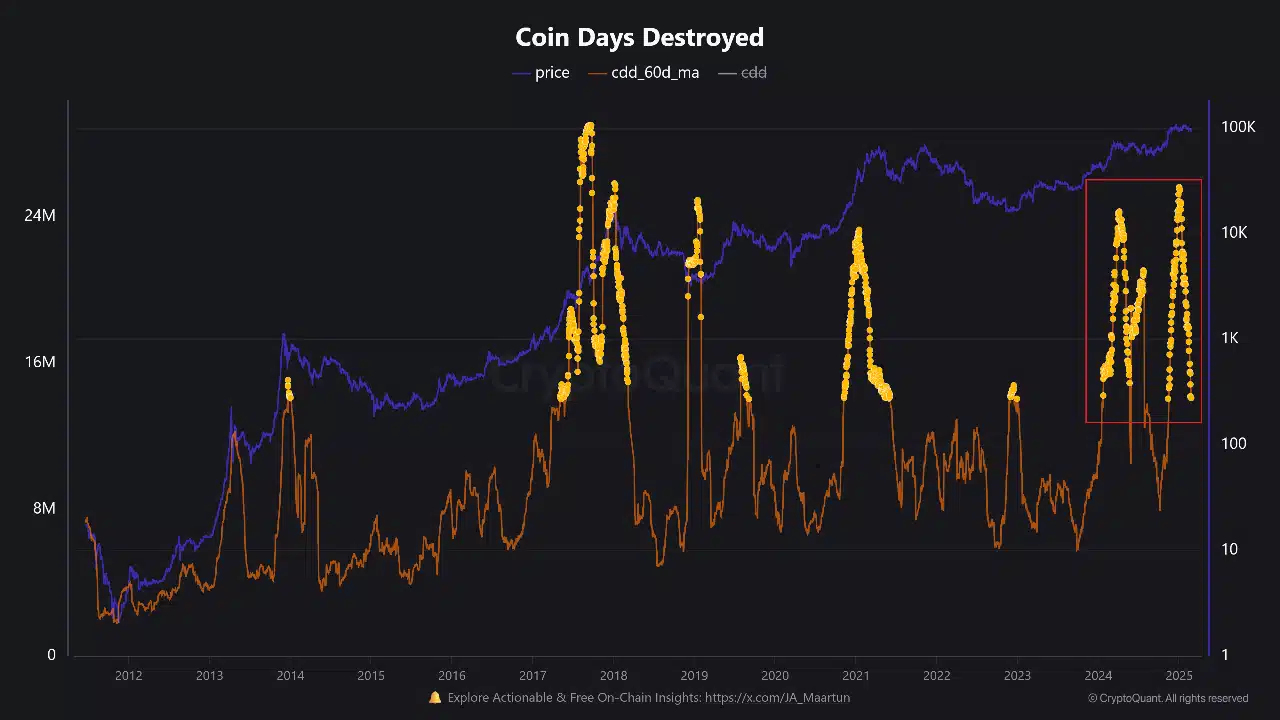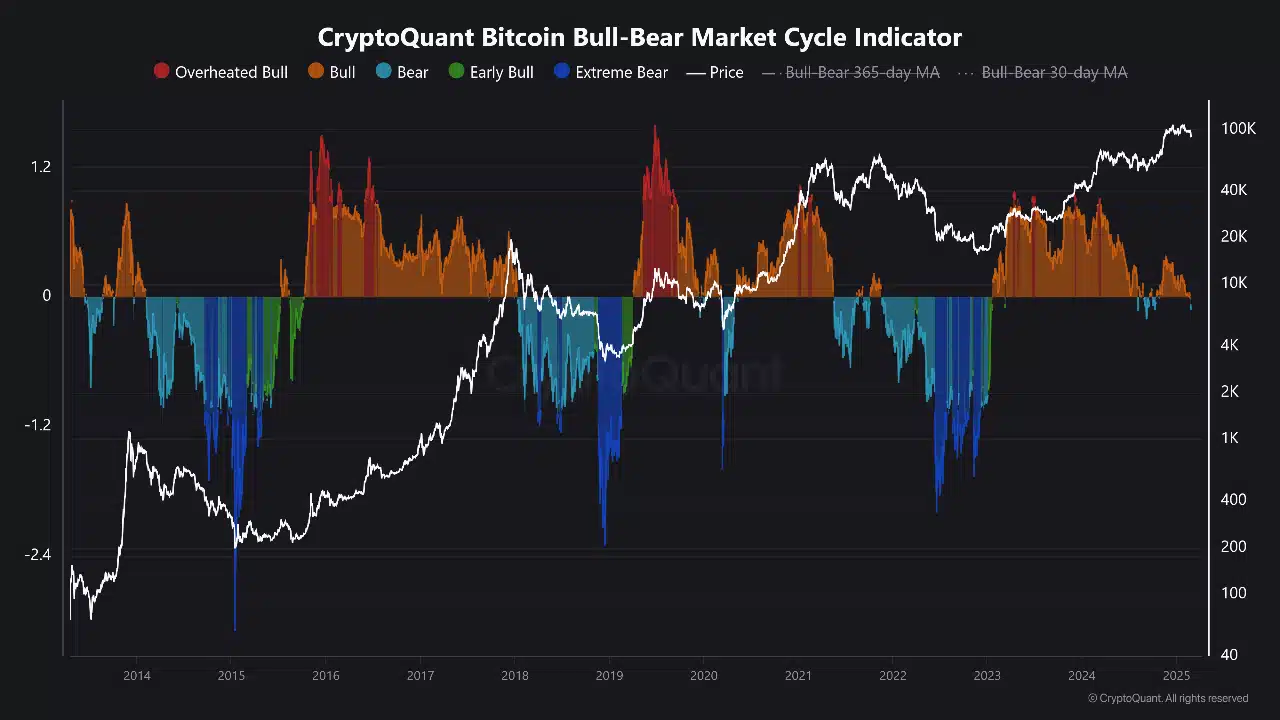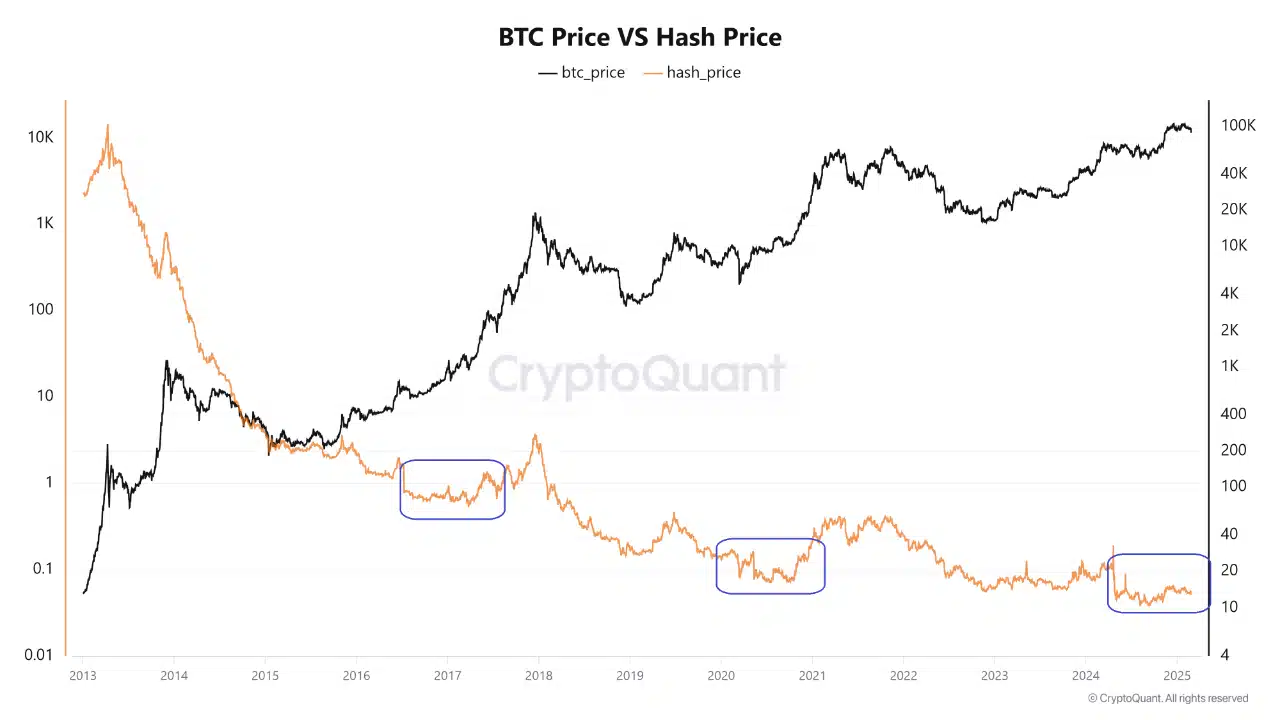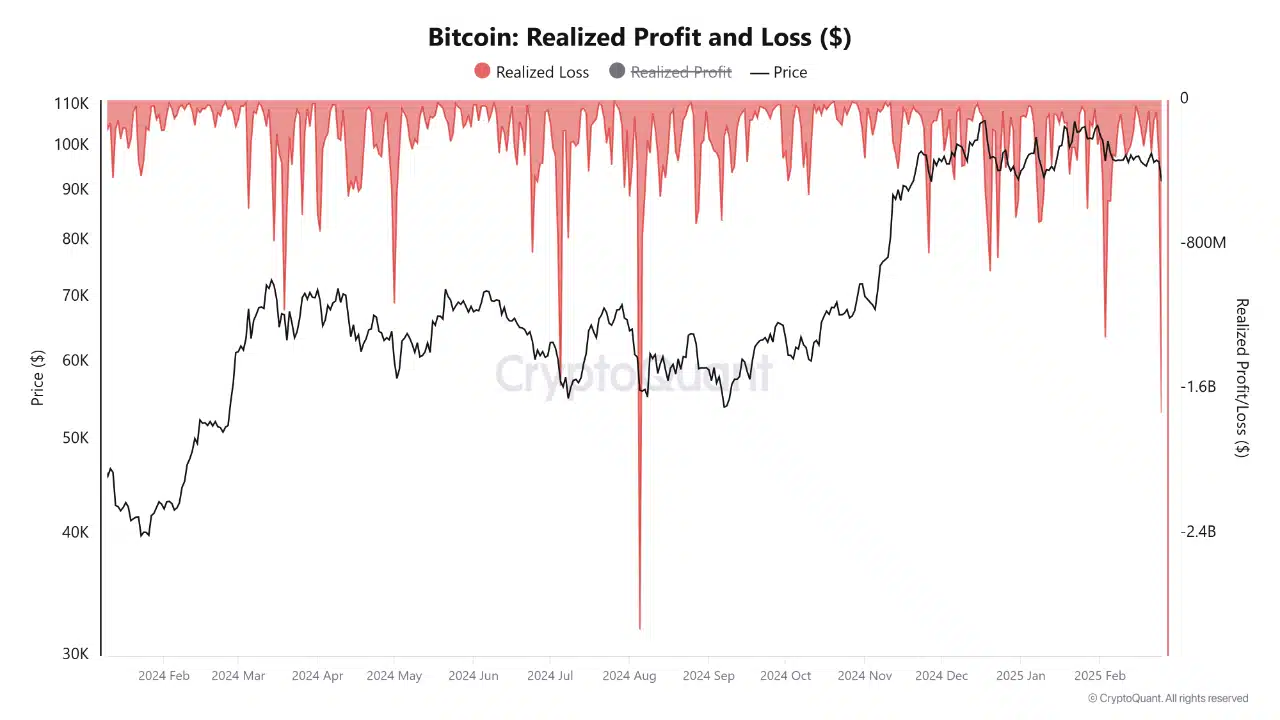-
Bitcoin’s market dynamics have shifted noticeably in early 2025, revealing significant trends in holder activity and price volatility.
-
Analysts note that these changes may reflect broader market cycles, potentially guiding investment strategies in an evolving cryptocurrency landscape.
-
According to CryptoQuant, these visible trends suggest nuanced shifts in Bitcoin’s trajectory, impacting investor sentiment and market confidence.
Explore Bitcoin’s evolving market dynamics in 2025 as key indicators highlight significant transitions and potential price bottoms for investors.
Reshaping market momentum
The Maartuunn’s 60-day Coin Days Destroyed (CDD) indicator has shown pronounced surges in long-term holder activity, particularly from January to July 2024 and again from November 2024 to February 26, 2025. This pronounced activity is critical for understanding market sentiment among holders.
The analysis indicated sharp spikes in CDD, peaking at over 24 million coin days destroyed, marking the strongest signals observed since 2021. This suggests that long-term holders are actively adjusting their positions, often a precursor to significant market movements.

Source: CryptoQuant
Increased spending by long-term holders—often viewed as Bitcoin’s loyal supporters—typically precedes market tops or heightened volatility. Consistent elevation in CDD levels over the past year indicates a possible trend of profit-taking or asset reallocation among these holders, which may introduce selling pressure into the market.
This cyclical behavior mirrors past market peaks, especially noted during the 2021 peak when similar CDD conditions indicated pivotal turning points.
BTC market cycles: A changing landscape
Recent evaluations using CryptoQuant’s Bull-Bear Market Cycle Indicator suggest that Bitcoin has transitioned from a period of bullish momentum to a bearish trend by late 2024. The indicator registered a notable dip, reaching -0.0685 on October 24, 2024, while the 365-day moving average continued its downward trajectory at 0.25.

Source: CryptoQuant
This divergence in momentum indicates a weakening bull cycle and draws parallels with previous market downturns. Historically, readings in negative territory foreshadow bear markets, characterized by declining prices and intensified selling activities. The change in sentiment, reflected in the orange and blue zones of the chart, has dampened investor enthusiasm, akin to conditions experienced during the 2018 bear market.
The Bitcoin mining economy’s role in price stability
Moreover, an analysis of the BTC Price vs. Hash Price chart elucidates a key correlation influencing Bitcoin’s pricing structure. The identified blue boxes signal periods where Hash Price has plummeted to its lowest levels, which have historically aligned with market price bottoms.

Source: CryptoQuant
Historically, lows in Hash Price have been observed in 2015, 2019, and 2023, grounding expectations that the current decline in early 2025 may indicate that Bitcoin is nearing a price bottom. Despite fluctuations, the persistent bull trend appears resilient, suggesting that as Hash Price decreases, price recoveries often follow suit.
This trend indicates that while miners might experience reduced profitability, Bitcoin’s overarching price resilience signals sustained appetite among holders and traders.
Capitulation in BTC profit
Lastly, the BTC realized Profit and Loss chart highlighted a significant capitulation event on February 25, 2025, the largest observed since August 2024. During this event, novice investors liquidated over 79,000 BTC at a loss, leading to a staggering $1.7 billion in realized losses.

Source: CryptoQuant
This significant capitulation echoes patterns seen in August 2024, where a market bottom was established following Japan’s interest rate hikes, eventually leading to a recovery to $100,000 by December 2024. The observed decline in realized profits suggests panic selling among traders; however, historical context indicates that such capitulation often signals the potential for a price floor.
Investors should utilize analysis and upcoming opportunities, as these events can commonly precede stabilization in mid-term price trajectories, ultimately fostering growth.
Conclusion
In conclusion, Bitcoin’s current market dynamics emphasize crucial shifts in holder behavior, market cycles, and miner profitability—each reflecting distinct signals essential for navigating this volatile terrain. By synthesizing these insights, investors can craft strategies that align with the market’s evolving landscape, preparing for potential opportunities ahead.
